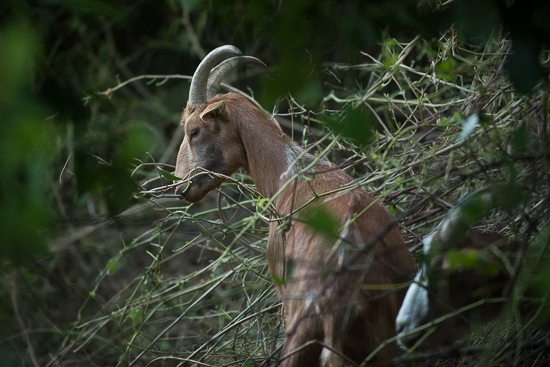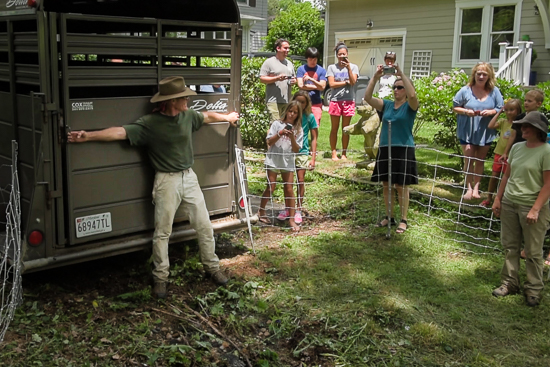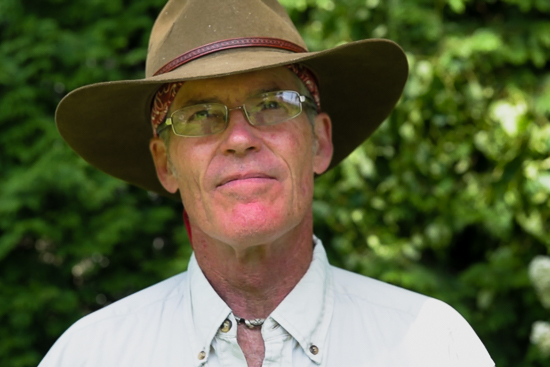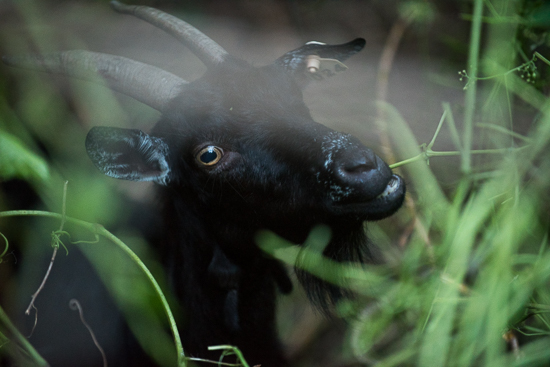Invasive plants got your goat?
Maryland company explores outside-the-box approaches to invasive vegetation removal

Invasive species, or plants and animals that have been introduced to an area, can cause harm when they establish themselves at the expense of native wildlife. These invaders pose a threat to native species by outcompeting them for resources like food and habitat that are necessary for survival. Often, these species expand their range and population numbers at such a rapid pace that landowners and wildlife managers struggle to contain their spread.

Brian Knox is President of Sustainable Resource Management, Inc., a natural resource consulting firm based out of Davidsonville, Md., that deals primarily with managing forest vegetation. Knox has seen success in combating invasive plants by implementing outside-the-box tactics. “A lot of people these days are getting more conscious about their herbicide usage,” said Knox. “As a very small company, we’re not afraid to try anything.”
In 2007, Knox began unleashing a herd of goats—referred to as Eco-Goats—on areas overrun by invasive vegetation. The goats have proven to be a viable option for these problem areas, because they can go many places that people and machinery cannot reach, like steep slopes and hillsides. Additionally, because of the goats’ mouth shape and digestive system structure, they are able to grind up seeds in a way that ensures seeds are not returned to the soil to resprout at the end of the digestive process.

A herd of about 30 goats can work through about a half-acre of dense vegetation in 3 to 4 days. “Goats are very good at biomass reduction,” explained Knox. “Typically, a goat can eat about 25% of its bodyweight a day in green material. If you figure an average of 100 pounds, that’s 25 pounds of vegetation going into every goat that’s out there.”

Although the goats are fond of invasive species like kudzu, porcelain berry, wine berry and mile-a-minute and are undeterred by thorns, they do not discriminate against native species. So before committing his goats to an area, Knox surveys each site to make sure the vegetation is appropriate. “A misapplied goat is every bit as bad as a chemical spill,” said Knox. “You can do damage with a goat... I look for native species and ask, ‘Is there more here to save than there is to get rid of?’ If so, that’s a terrible place for a goat.”

Spending your day with a herd of goats may sound like fun, but managing the goats is hard work. “A lot of people think it’s just sitting around and watching the goats, and boy, that would be a great job. And then you talk to them about how it took me two days to get the fence up and I’m soaked through to my socks by eight in the morning,” said Knox. “But clearly there’s something that I really love about this. And it’s the educational aspect of it, seeing people’s eyes light up while watching the goats.”

Comments
THATS COOL
Thank you!
Your comment has been received. Before it can be published, the comment will be reviewed by our team to ensure it adheres with our rules of engagement.
Back to recent stories